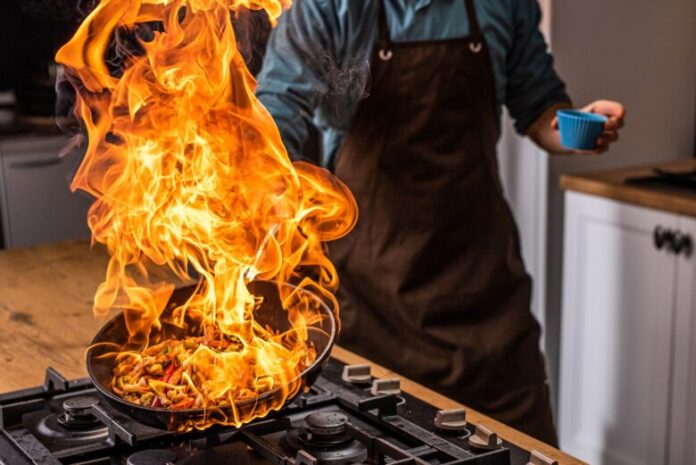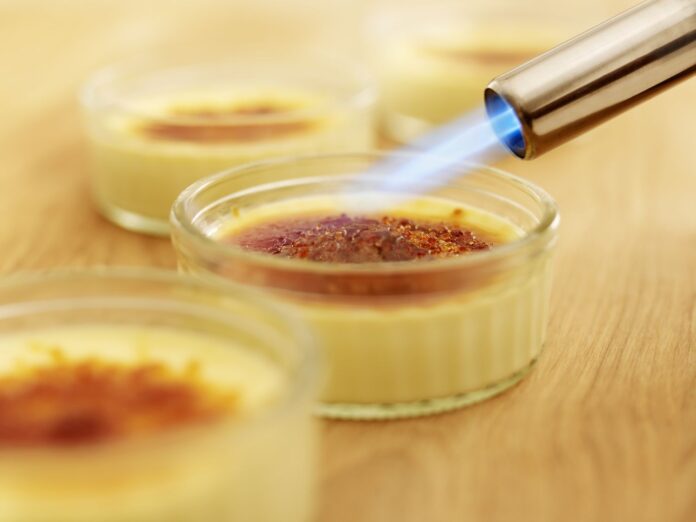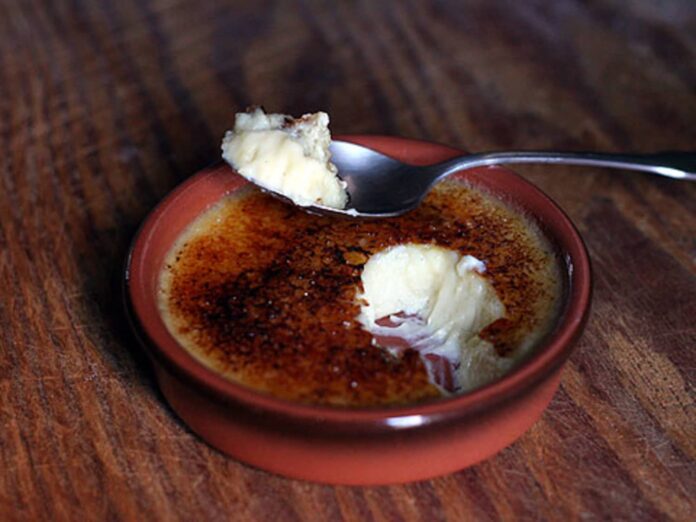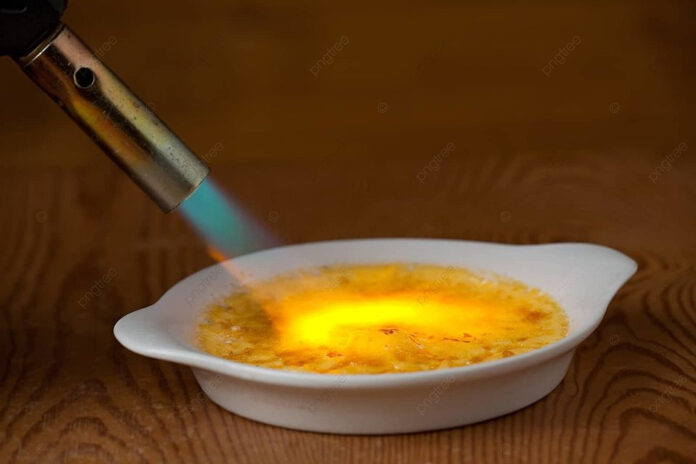
Baking has long been a harmonious blend of science and art. With evolving techniques and innovation, the culinary world is constantly being redefined. One such groundbreaking method that has reemerged in the spotlight is flame treating. It’s not just about applying heat; it’s about harnessing the power of flames to elevate baked dishes to a new dimension. This blog dives deep into this technique, unraveling its wonders and showing why it’s touted as a game changer in contemporary baking.
Understanding Flame Treating

Flame treating is steeped in tradition, far from being just a recent culinary fad. Rooted deeply in cooking history, its essence revolves around subjecting food, predominantly baked items, to the fervor of open flames. The primary goal? To masterfully char or caramelize the surface, bestowing it with character and depth. While ancient chefs leaned on the unpredictability of open fires to harness similar outcomes, today’s chefs have the advantage of leveraging modern equipment, yielding greater precision and command over the process. The outcome? A palate explosion as flame treating unearths layers of intense flavors, serving up a gastronomic adventure that’s unparalleled.
Advantages of Flame Treating
The charm of flame-treated baked delights transcends mere aesthetics. When subjected to the raw power of flames, the transformation is multi-dimensional.
Flavor and Aroma Development: Flame treating is an alchemy. By instigating the Maillard reaction and the caramelization process, it refines the dish’s flavor, infusing it with a rich, smoky, and intoxicating depth that lingers.
Visual Appeal: Aesthetically, the results are striking. Baked goods emerge with a golden-brown hue, making them visually enticing and downright irresistible.
Unique Textures: Consider the brittle caramel shield atop a crème brûlée or the rustic crust of a freshly baked bread; flame treating crafts these textures, making every bite an intriguing exploration.
Flame Treating Equipment

Dabbling in flame treating mandates specific tools tailored for the task. Handheld torches, owing to their nimbleness, are a favorite among many. For those seeking an integrated solution, contemporary ovens now boast built-in flame features, placing unparalleled control at the baker’s fingertips. Yet, with the allure of flames comes the need for caution. It’s indispensable to ensure a kitchen with ample ventilation and to keep firefighting tools, like extinguishers, within arm’s reach. Mindful handling of equipment such as Burner Controller, coupled with a strict adherence to the manufacturer’s guidelines, can preempt potential mishaps.
Flame Treating Techniques
Given the vast spectrum of baked delights, flame treating techniques must be bespoke:
Torching Meringues and Desserts: With a torch in hand, a deft application can impart meringues with a tantalizing smoky aroma and hue.
Flame Finishing Bread: Seeking a rustic touch? Direct flame contact can be your ally, crafting a crusty, appetizing bread exterior.
Browning Casseroles and Gratins: Controlled flame treatment is the secret to that sought-after crispy, golden-brown top layer.
Applications in Baking

The scope of flame treating is boundless. Whether it’s crafting the crackly sugar canvas on a crème brûlée or sculpting the crusty veneer of a sourdough bread, the possibilities are immense. Not limited to just desserts, flame treating can also elevate roasted vegetables, giving them a smoky, grilled texture that’s simply sublime.
Flavor Development through Flame Treating
More than just a visual spectacle, flame treating stands as a guardian of flavor. The dance of open flames intricately interacts with the ingredients, triggering the Maillard reaction and the magic of caramelization. This alchemy, a testament to culinary innovation, uplifts the flavor profiles of everything from classic pies to intricate pastries. The taste nuances introduced by flame treating are unmatched. The outcome? A culinary experience where each bite plunges into profound depths of flavor, creating an indelible mark on the senses and leaving a lingering desire for more.
Visual Appeal of Flame Treated Baked Goods
Visual aesthetics in food aren’t trivial; they’re the initial ambassadors, the prelude to the culinary symphony that awaits. Flame-treated delicacies beckon with their lustrous golden-brown glows, alluring caramelized fringes, and impeccable artistic garnishes. The careful application of flame transforms the surface, creating visual textures and hues. Whether it’s a humble pie radiating warmth or an extravagant pastry showcasing craftsmanship, this visual metamorphosis ensures that the first bite is with the eyes, building anticipation for the flavors within.
Texture Transformation

Texture in food isn’t just about tactile feel; it’s about the story each morsel narrates and the journey it takes the palate on. Flame treating crafts tales of contrasts: the marriage of pillowy soft interiors with audacious crispy exteriors. The heat from the flame selectively crisps the outer layers while preserving the moisture inside. This equilibrium of textures, achieved with finesse, is what propels flame-treated dishes into a league of their own, promising a symphony of sensations with every bite, a dance of crunch and softness.
Innovation and Creativity
To term flame treating as merely a technique would be an understatement. It’s a canvas for culinary artists, a realm of endless possibilities. Empowered by flames, chefs can oscillate between varying flame intensities, synergize it with other cooking techniques, and blur traditional boundaries. Beyond mere cooking, it’s about painting with fire, crafting a narrative. It’s an invitation to imaginative thinking, birthing dishes that are nothing short of culinary marvels, each presenting a tale of creativity and innovation.
Safety Considerations

While the art of flame treating tantalizes with its prospects, bringing myriad transformations to dishes, safety remains sacrosanct. It’s pivotal to ensure unobstructed airflow in the kitchen, to arm oneself with protective attire, and to treat flame equipment with the respect it demands. The flames, while enchanting, are potent and demand mindfulness. At the heart of it, the mission is to magnify the allure of the dish, without compromising on safety or well-being, ensuring that the culinary journey is both delightful and secure.
Conclusion
Flame treating in baking is more than just a fad; it’s a testament to the ever-evolving nature of culinary arts. From unparalleled flavors and textures to visual appeal, it brings a myriad of benefits to the table. So, whether you’re a seasoned chef or a home baker, we encourage you to stoke the flames of creativity and introduce flame treating into your baking repertoire. Embrace the flame and elevate your baking game!











